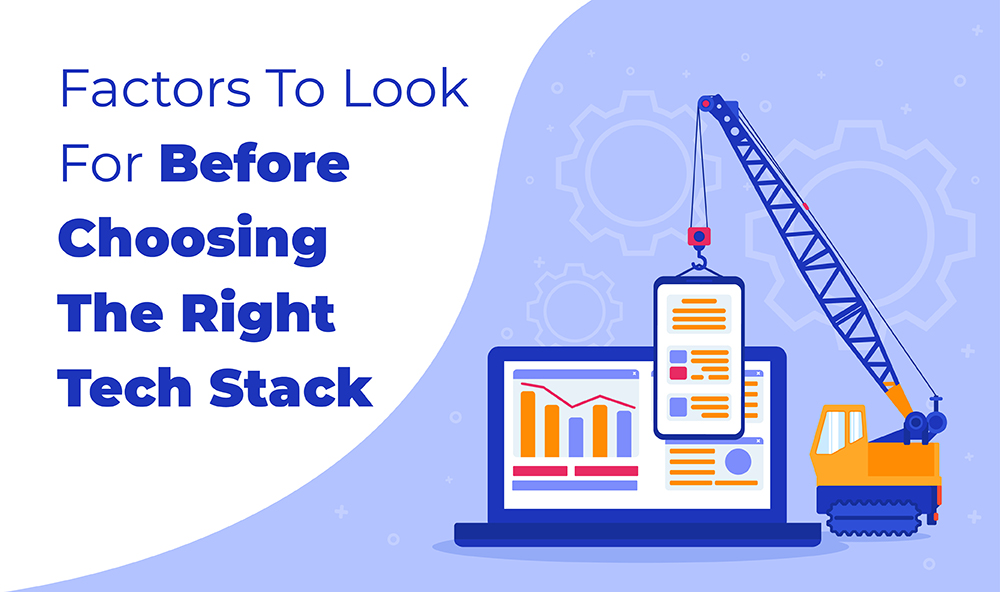
When creating software applications, developers frequently discuss a tech stack in their conversations.
One of those frequently used terms is “tech stack,” but like most technical buzzwords, it’s not always obvious what it means. When you enquire about someone’s stack, they might disclose the programming languages or web app development environments they employ.
This article is for you if you’ve been perplexed by all of the instances where the phrase “tech stack” has been used. We’ve covered the definition of a tech stack, how it differs from or is similar to a software stack, why it’s important, and how to pick the best one for your company.
Let’s just start by clearing your mind. Get more information on tech stacks here!
What exactly is Tech-Stack?
A tech stack comprises components, coding languages, and frameworks that programmers use to create mobile or web applications. It includes the servers, systems, database systems, computer languages, software development projects, and other tools used in creating and maintaining a web or mobile app.
There are two main components that make up a tech stack – A back end or the server-side of the application and a front end or the client-side.
Client-side(Front-end):
The elements that customers come in direct contact with or see on their screens are referred to as client-side (front end). Front-end technologies include things like HTML, CSS, and JavaScript. They contribute to the structure-design of your website and add page layout elements to add interactive content to your web product.
Server side (back end):
It consists of technical solutions that clients do not converse or see but are required for client-side technologies to function. Back-end web app development involves using tools like PHP, Django, and Apache, as well as web frameworks and servers.
Benefits of choosing the right tech stack
But first, let’s examine the advantages of selecting the appropriate tech stack:
- Choosing the appropriate tech stack will guarantee that the fundamental effectiveness of your software or product is strong.
- Your developers will be much more productive with the right tech stack.
- There will be less chance of accumulating technical debt because the codebase will be much simpler to maintain.
- Using the right technology will enable quick fixes for frequent bugs and the resolution of performance problems.

Factors to look for before choosing the right tech stack
Determine your requirements
You should first determine your needs, your target audience, and what you hope to achieve with a particular project. Next, decide on a technology based on your requirements.
There are many different programming languages, and each has advantages and disadvantages. When it comes to large-scale, logic-intensive projects, Java is fantastic. For smaller-scale projects, Python might be the best option.
Consider what is working after analyzing the market to determine users’ requirements and the competition. So, when selecting a tech stack, it is crucial to consider your prerequisites and how versatile they allow you to be.
Scalability
Before validating the technology stack, it is important to consider the growth prospects and prerequisites. A tech stack’s performance in an application’s scalability is to manage the increasing number of visitors and traffic while facilitating the functionality’s growth.
The technology stack you choose should support adding fresh, compelling features and sudden spikes in user volume.
Size of the project
Which tech stack you should use depends greatly on the size of your project. Most small projects can be developed using a straightforward tech stack.
However, complicated stacks and more specialized techniques are frequently needed for large projects. You might need different technologies for various components, and your main framework needs to support a lot of work.
Support & Maintenance
It is essential to figure out whether your team can preserve the application once it has been deployed. This comes after you’ve finished creating your app, and it’s related to the choice of your tech stack.
You should consider your team’s expertise when selecting a tech stack only if you intend to collaborate with an outsourcing mobile app development company that offers product maintenance and support after its execution.
A tech stack shouldn’t be taken into consideration unless you are certain that your team can use it effectively and won’t need any additional training.
Pricing Factor
Think about the tech stack’s overall value and cost. If you spend additional funds on pre-made tools, you might be able to develop your product faster, but there may be trade-offs if the tools are not as configurable as you require.
If they do not meet your needs in terms of technical specifications, affordable technologies may come with their own risks. The right technology stack should reduce costs while increasing value in the long run by allowing you to deliver a better product.
Security
Security is an important consideration for both your company and your customers. You must determine the ideal ratio of risks and advantages for your organization because no tool is impervious to security flaws.
A state-of-the-art technology that enables you to ship quickly might be less resistant to battle and more prone to attack. On the other hand, a tool that has been through a lot of combat might provide better security but limit your ability to tweak quickly.
Time-to-market and web app development
Your choice of tech stack will also depend on how soon you intend to launch. You want to find technologies that offer a top-notch user experience and enable you to roll out product updates quickly.
Customers’ willingness to try new things can help you get quicker feedback so you can make product improvements. Reusable code snippets are used by some tech stacks, which speeds up mobile app development. Choose one of these options if you want to create an app rapidly.
Considering the maturity of the tech stack!
Tech stack maturity is a different factor to take into account when selecting a solution architecture.
So, you need to consider the following things before choosing the right tech stack
- Is there a well-established environment of third-party libraries, techniques, and paradigms that will assist you in developing the app more quickly?
- How well-documented is this technology stack?
- Is it a proprietary technology that will force you to stay with a vendor for years, or does it have a reliable open-source community around it?
The general rule is that more established ecosystems with lots of support documentation and pluggable remedies are found in older tech stacks.
To conclude!
Selecting a tech stack can be a time-consuming and difficult process that calls for rigorous consideration, a thorough comprehension of the goals of your product, its potential growth, and hands-on experience.
The technological stack you select will determine whether or not the product can satisfy end users’ requirements and survive competition in the marketplace, so it’s a significant choice.
The first step in the software development project is to become familiar with technology stacks, their function, and how they are implemented.
Tech stacks are crucial to the growth of your project, and you must have skilled developers on your team to steer it in the right direction.
Therefore, it is preferable to hire a team of experts and carry out a discovery phase in order to choose a tech stack properly. Therefore, feel free to get in touch with us if you’re looking for some professional direction and consultation. Sufalam technologies team’s here to assist you in choosing a tech stack to realize your idea!













